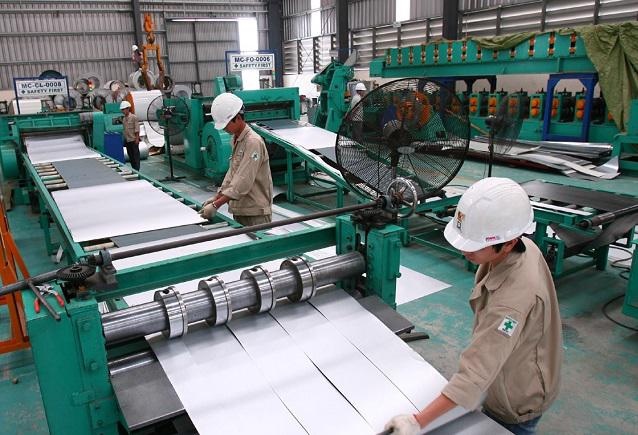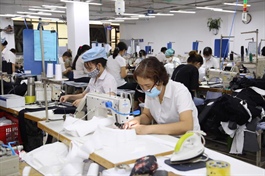Trade ministry proposes special mechanism for steel industry
Trade ministry proposes special mechanism for steel industry
The total demand for steel in Vietnam’s manufacturing sector by 2030 would be $310 billion, which remains a huge market for the local steel industry, especially machine steel or high-quality carbon steel.
The majority of local steel producers are using obsolete technologies, which required special mechanisms to support the sector development for higher competitiveness and production capacity.

Production of steel sheet in Siam Steel Vietnam. Photo: Hai Linh |
The Ministry of Industry and Trade (MoIT) stressed the view in a report submitted to Prime Minister Pham Minh Chinh, noting an imbalance between the upstream and downstream of the steel industry in the 2016-2021 period.
According to the MoIT, the production of steel products such as galvanized steel sheets, steel pipe, alloy steel, or hot-rolled coil (HRC) is still dependent on imported materials.
At present, the domestic production capacity of steel billet is estimated at 27 million tons per year, of which that of HRC is 7-8 million tons, but the sector has to import around 18 million tons of iron ore, and 6-6.5 million tons of steel scrap for production.
“This has hurt the competitiveness of the steel sector as domestic supply is not able to meet the demand, or the ability to produce special carbon steel products,” noted the ministry.
The ministry also pointed out the existence of low-capacity steel plants using obsolete technologies with high environmental risks.
“The fact that steel has been excluded from the list of price control products by the Government makes it hard for the authorities to control the domestic production capacity,” said the ministry.
Meanwhile, the steel industry remains key in providing input materials for manufacturing and processing sectors of mechanism, automobile, defense ministry, mining, and electricity, for which a clear strategy is essential for their development.
In its proposal, the MoIT called for the development of a large-scale steel complex focusing on the production of steel products of high demand.
“This would help the sector master core technologies for production, and eventually be able to produce diversified steel products to meet the demand of the manufacturing sector,” stated the ministry.
“Steel imports should be limited to those that are not produced domestically, such as those for shipbuilding or of high quality,” it said.
The MoIT also noted the necessity to set up more manufacturing plants for HRC, which currently make up a large proportion of the manufacturing sector.
According to the MoIT, Vietnam’s central region is suitable for developing large-scale steel projects, with numerous deep-sea sports, abundant renewables, and large land funds.
The Red River delta with a large population, high demand for steel consumption, and adequate transport infrastructure is also a potential location, despite its limited land funds.



















